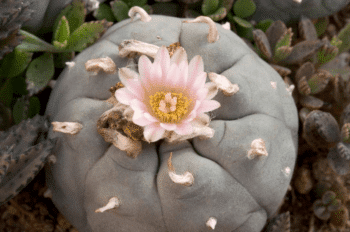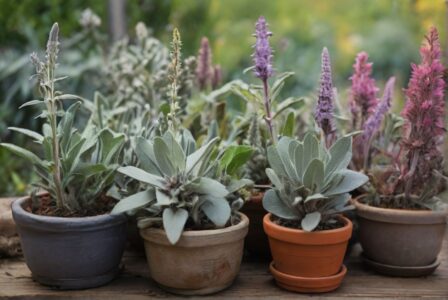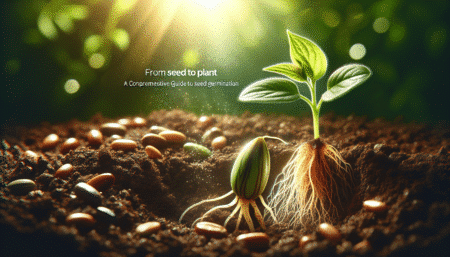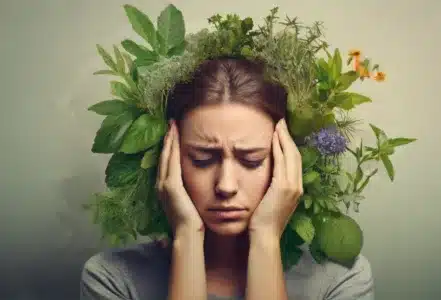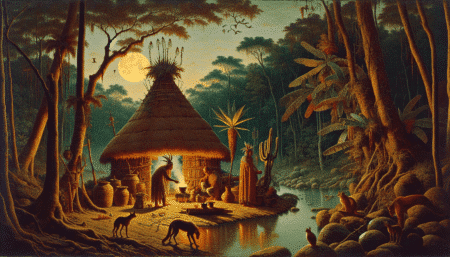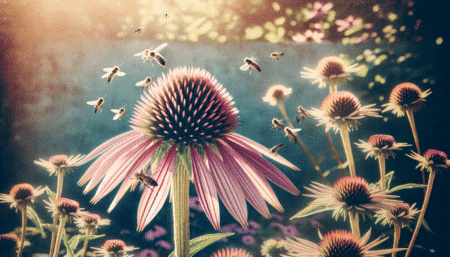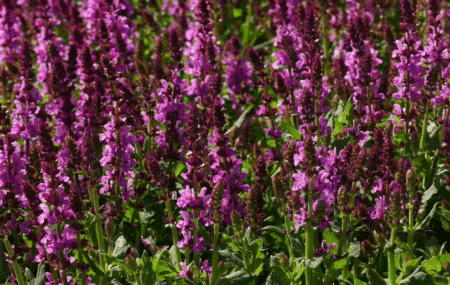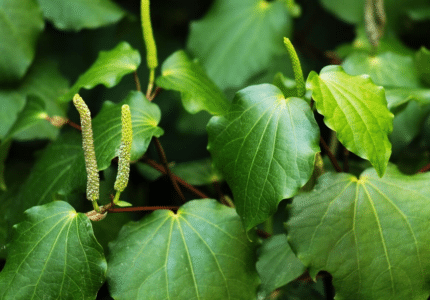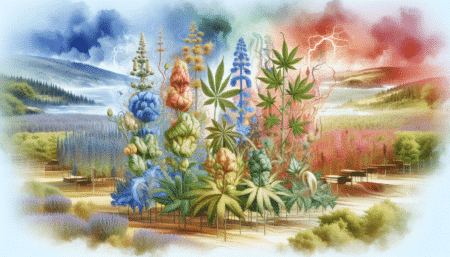- What is peyote?
- The history of peyote
- Where does peyote grow?
- The importance of peyote in indigenous cultures
- Cultivation and use of peyote
- The psychoactive effect of peyote
- Risks and side effects of peyote consumption
- Is the consumption of peyote legal?
- Research and medical applications of peyote
Here you can find our Lophophora products!
Peyote
Peyote is a small, prickly cactus species native to the deserts of North America and has played an important role in the cultures of indigenous peoples for centuries. This blog article provides an overview of the history, cultivation, use and psychoactive effects of peyote. It also sheds light on the risks and side effects of consumption and the legal situation. It also discusses the current research and medical applications of peyote. Let's immerse ourselves in the fascinating world of this unique cactus plant!
1 What is peyote?
Peyote is a small, prickly cactus species native to the Mexican desert and southern Texas. It is often used by indigenous peoples as a sacred sacrament and has a long history in traditional medicine. The consumption of peyote was documented in pre-Columbian times and is still practiced today by various tribes in North and South America. The psychoactive effect of peyote comes from the presence of mescaline, a chemical compound that causes various reactions in the brain. Although some studies suggest that mescaline may have potential medicinal applications, its consumption remains controversial - particularly due to its psychoactive effects. Ultimately, it is up to each individual to decide whether or not to consume peyote - however, possible risks and side effects should be considered when making this decision.
2. the history of peyote
The history of peyote goes way back to the time of the indigenous peoples of North America. Thousands of years ago, the cactus was revered by various tribes as a sacred plant and used for spiritual purposes. Among the Huichol, a people from northern Mexico, peyote plays a particularly important role in their religious ceremonies and is seen as a connection to the spiritual world. During the colonization of America, the consumption of peyote was banned and criminalized by the European conquerors. It was not until the middle of the 20th century that the potential of this plant was recognized again and its effects began to be studied more intensively. Nowadays, despite its long tradition, peyote is still a controversial topic, as its consumption is often associated with drug abuse and there are also legal restrictions. Nevertheless, its importance for many indigenous communities remains high to this day.
3. where does peyote grow?
The peyote cactus is a small and spiny plant that grows in the desert regions of northern and central Mexico as well as in the south of the USA. These regions are known for their poor soils and extremely dry climate, which makes it difficult to grow other types of plants. However, the peyote has adapted perfectly to these conditions and is able to store water and survive. The plant grows slowly and can reach a height of up to 30 cm. It has a green or gray-green hue with a distinctive pattern of warts on its surface. The peyote is often considered sacred and plays an important role in many indigenous cultures.
4 The importance of peyote in indigenous cultures
Peyote has a long history in the indigenous cultures of North America, particularly among the Huichol and Tarahumara tribes in Mexico. For them, peyote is a sacred sacrament and is used in spiritual ceremonies. It is believed that peyote has the ability to expand the mind and establish a connection to the spiritual world. In many tribal societies, it is also used as a remedy for physical ailments, such as pain and diseases of the digestive system. The importance of peyote to these cultures cannot be overstated, as it is deeply embedded in their traditions and rituals. Despite increasing modernization, many indigenous communities continue to have access to peyote and maintain its spiritual significance.
5. cultivation and use of peyote
Cultivation and use of peyote When it comes to the cultivation and use of peyote, it is important to note that this is a sacred herb for many indigenous cultures. It is often used as part of religious ceremonies to facilitate spiritual experiences. Although the cultivation and consumption of peyote is legal in some countries, there are also countries where it is illegal and can carry harsh penalties. Peyote only grows in certain regions of North America and prefers dry areas with sandy soil. Cultivation can be difficult and requires a lot of patience, as growth is slow.
However, peyote should only be harvested by experienced people, as they must ensure that the plants are not damaged. The use of peyote can have a variety of psychoactive effects. Some people report intense visions or a feeling of deep connection with nature or the universe. However, there are also risks associated with peyote use such as nausea or hallucinations. Overall, the use of peyote remains a controversial topic due to its deep-rooted significance in indigenous cultures as well as its potential risks to health. It remains to be seen whether further research can confirm the medicinal properties of this plant and whether the legal landscape around its use will change.
6 The psychoactive effect of peyote
Peyote is a plant that is considered sacred in many indigenous cultures in Central and South America. The psychoactive effect of peyote is due to the presence of the alkaloid mescaline. This substance affects the central nervous system and leads to changes in thinking, feeling and perception. When you consume peyote, you may experience visual hallucinations that are often described as intense and spiritual. In addition to the visual effects, you may also experience feelings of euphoria or anxiety. Some people also describe a heightened awareness of their surroundings or experience a deep emotional experience while consuming peyote. It is important to note that everyone reacts differently to these substances and that experiences can vary.
7 Risks and side effects of peyote consumption
Before consuming peyote, you should be aware of the risks and side effects. Although there is a long history of peyote use in indigenous cultures, consuming the psychoactive cactus can be dangerous for some people. Possible side effects include nausea, vomiting and diarrhea. In addition, hallucinations and changes in consciousness may occur, which some people may find unpleasant. It is also important to note that peyote can interact with other medications and is not safe for everyone. If you decide to try peyote, you should only do so under the supervision of an experienced user and inform yourself thoroughly beforehand.
8. is the consumption of peyote legal?
Peyote is a plant that has been used for centuries in indigenous cultures in North America. The psychoactive effect of peyote has meant that it has also become known outside these cultures. But is the consumption of peyote even legal? There is no general answer to this question, as there are different laws depending on the country and region. In some countries, such as the USA or Canada, the consumption of peyote for religious purposes is permitted, while in other countries, such as Germany or France, it is illegal. It is therefore important to find out exactly what the law is before consuming peyote. Because anyone who breaks the law risks severe penalties.
9. research and medical applications of peyote
In recent years, peyote has become increasingly well-known due to its psychoactive effect and its importance in indigenous cultures. However, in addition to its consumption for spiritual purposes, there is also research into the medical applications of peyote. The alkaloid mescaline in particular is being investigated, as it has a similar structure to serotonin and could therefore potentially be used to treat depression, anxiety disorders or post-traumatic stress disorder. Peyote could also play a role in the treatment of addiction or pain. However, research is still at an early stage and further studies are needed to investigate the efficacy and safety of peyote as a drug. Nevertheless, there is growing interest in the potential therapeutic applications of peyote, so further findings can be expected in the future.
Note: The information in this article is for informational purposes only and is not intended to replace the advice of a physician or other healthcare professional. Always consult a doctor before using any new herbs or supplements. Furthermore, you should always check whether the cultivation/possession/use/processing of certain plants is permitted in your country. As we only offer ornamental plants in our store, we are allowed to only Provide information and advice on the correct care of plants!

